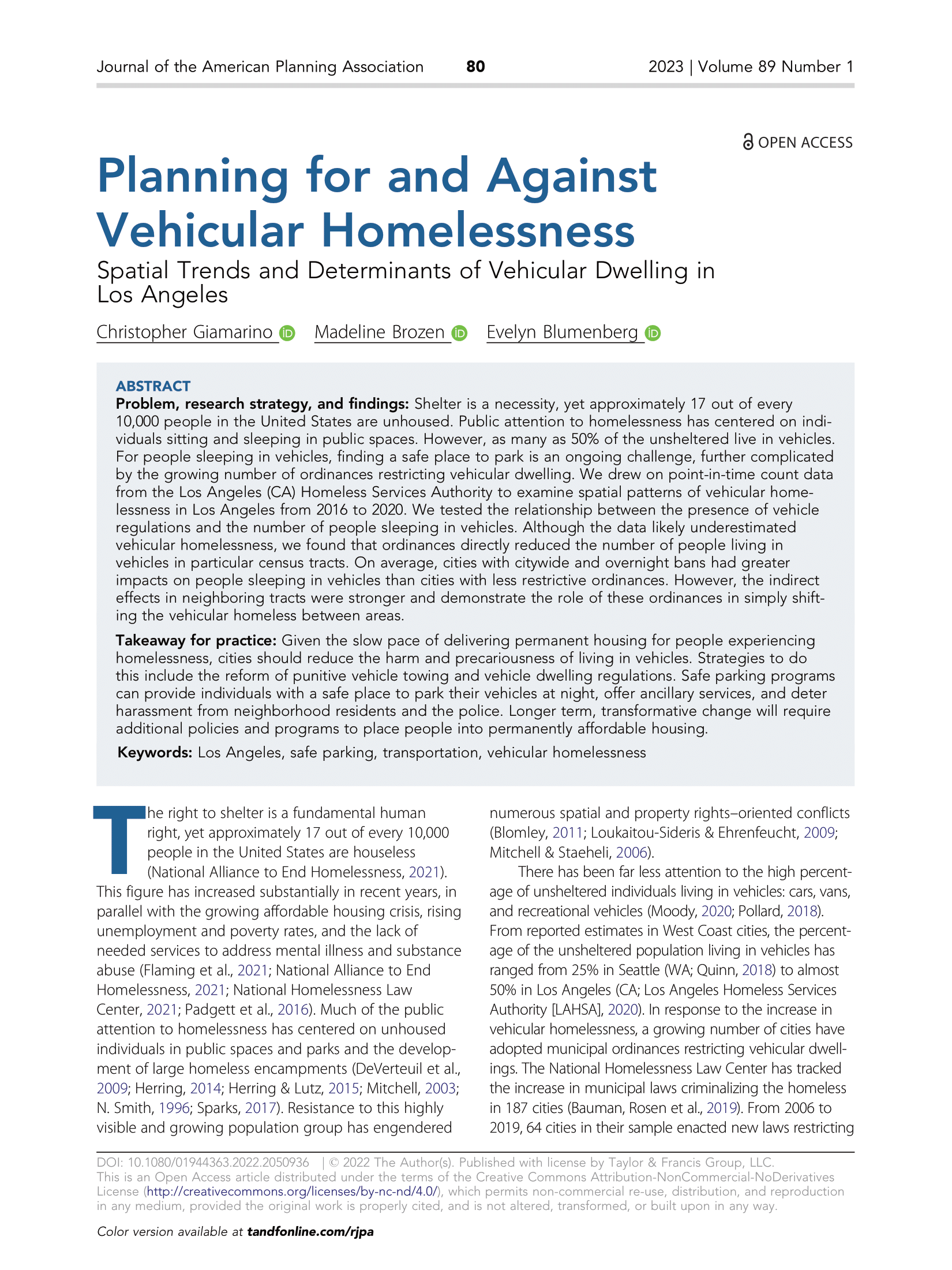Date: June 23, 2022
Author(s): Christopher Giamarino, Madeline Brozen, Evelyn Blumenberg
Abstract
Problem, research strategy, and findings
Shelter is a necessity, yet approximately 17 out of every 10,000 people in the United States are unhoused. Public attention to homelessness has centered on individuals sitting and sleeping in public spaces. However, as many as 50% of the unsheltered live in vehicles. For people sleeping in vehicles, finding a safe place to park is an ongoing challenge, further complicated by the growing number of ordinances restricting vehicular dwelling. We drew on point-in-time count data from the Los Angeles (CA) Homeless Services Authority to examine spatial patterns of vehicular homelessness in Los Angeles from 2016 to 2020. We tested the relationship between the presence of vehicle regulations and the number of people sleeping in vehicles. Although the data likely underestimated vehicular homelessness, we found that ordinances directly reduced the number of people living in vehicles in particular census tracts. On average, cities with citywide and overnight bans had greater impacts on people sleeping in vehicles than cities with less restrictive ordinances. However, the indirect effects in neighboring tracts were stronger and demonstrate the role of these ordinances in simply shifting the vehicular homeless between areas.
Takeaway for practice
Given the slow pace of delivering permanent housing for people experiencing homelessness, cities should reduce the harm and precariousness of living in vehicles. Strategies to do this include the reform of punitive vehicle towing and vehicle dwelling regulations. Safe parking programs can provide individuals with a safe place to park their vehicles at night, offer ancillary services, and deter harassment from neighborhood residents and the police. Longer term, transformative change will require additional policies and programs to place people into permanently affordable housing.
About the Project
A recent survey by the Public Policy Institute of California shows that 85% of Californians are concerned about the presence of homeless people in their community and believe addressing this issue should be a top priority. Few scholars have studied the large and growing numbers of people who live in their vehicles. According to point-in-time count data from the 2019 Los Angeles Homeless Services Authority, over 40% of the unsheltered homeless population in LA County, some 14,000 people, rely on vehicles (cars, vans, RVs) for shelter. The increase in vehicular homelessness raises challenges for both people who are experiencing homelessness and for cities. Vehicle living can be cost-effective relative to sky-high rents, but residents often lack essential amenities. At the same time, residents complain about the adverse effects of vehicle encampments on their neighborhoods. In response, this project seeks to create a better understanding of vehicular homelessness as a way for both homeless providers and transportation officials alike to address this precarious form of shelter.


